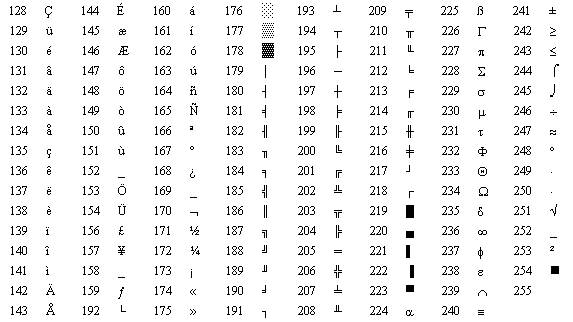
UTF-32, which is ASCII-based, but in which each character is represented as a 4-octet subsequence. UTF-16, which is ASCII-based, but in which each character is represented as one or two 2-octet subsequences, and its subset UCS-2, in which each character is represented as one 2-octet subsequence

#ASCII CODEPOINTS CODE#
National variants, other than the US variant, of the ISO 646 standard, which is mostly ASCII-based, but which reserves a small set of code point values, such as the ASCII code points for '#' and '$', for assignment to different characters in different national variants, such as the British national variant, which assigns the code point value 0x23 to '£' rather than to '#' (the US national variant is ASCII) Variants of IBM's EBCDIC encoding, which is incompatible with ASCII, so that, for example, the code point value in EBCDIC is 0xC1 For example, the code point value for the letter 'A' is decimal 65, or hexadecimal 41 (0x41), so, in most of these character set encodings, the letter 'A' is encoded as a single octet with the value 0x41. Most character set encodings are based on ASCII and encode the 128 code points of ASCII as a single octet whose value is the code point value. It's represented as a sequence of octets (bytes) using a particular encoding for that character set, wherein each character is represented as a 1-or-more-octet subsequence in that sequence.Ī given sequence of octets doesn't necessarily correspond to the same character string in all encodings.

A character string is a sequence of "code points" from a character set.


 0 kommentar(er)
0 kommentar(er)
